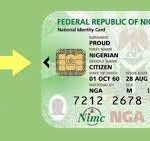We’ll be discussing the step-by-step approach on how to recognize real gold today and as such, take your time to read this piece to the last paragraph.
Do you know anyone who has purchased fake gold or even heard of such a thing happening to one or two people?
Many people find it hard to recognize real gold, thus falling into a scammer’s trap.
Gold is the ultimate prestige symbol, traditionally reserved for royalty, and a sign of eternal power, wealth, and immortality.
Because of gold’s high value, even fake gold can make cheap jewelry look more substantial.
It is a good investment source because its scarcity is just right for modern civilization to find desirable without rendering it worthless.
However, one major issue is that it is easy to forge. Someone might easily pass off copper or brass jewelry as gold if you wear a lot of gold rings, necklaces, or other accessories.
There are a few ways to tell if the gold you have or plan to buy is authentic. While there is no 100% reliable method for determining if gold is good, you can obtain a reasonable idea by conducting many tests.
This article will walk you through a few tests you can do to verify the authenticity of the gold you own or plan to purchase.

What Materials Are Used to Create Imitation Gold?
To recognize real gold, you need to know the makeup of actual gold to know the telltale signs of a fake one.
There is a wide range of karat values, from 24 karats down to 8 karats, all of which indicate varying degrees of authenticity.
24-karat gold contains a minimum of 99.9% pure gold, making it extremely rare.
In contrast, the gold content of a 14k item is much lower, at only 58.3%, with the remaining 41.7% being made up of an alloy of two or more metals. The metals could be silver, copper, nickel, or zinc.
However, fake gold items are not made of actual gold. Even though they look like gold on the outside, they are entirely constructed from a different material.
Here are a few popular and widely-used examples of imitation gold:
1. Gold-Filled Accessories
People who want the benefits of gold without the hefty price tag might choose gold-filled jewelry.
Gold filling means applying a thin layer of gold to another metal, typically silver or brass. This style’s longevity and enduring shine have made it famous.
2. Gold-Plated Accessories
This is one of the best methods you can trust on how to recognize real gold. When gold is plated over silver or copper, a thin layer of the more expensive metal is added.
As opposed to paint or lacquer, which can crack over time, this covering lasts for years thanks to chemical or electrochemical bonding.
3. Aluminum Bronze and Copper Brass (Copper Alloys)
The majority of available fakes are bronze or brass, two popular copper alloys. Brass (a copper-zinc alloy) outshines bronze (copper-tin alloy) as an imitation gold because it keeps its golden hue for longer.
Cupronickel, a copper-nickel alloy, looks similar to gold but isn’t utilized in jewelry due to nickel allergy.
4. Mineral Pyrite (Fool’s Gold)
Iron sulfide pyrite is commonly known by its alias, fool’s gold. Its shiny luster and brassy yellow tint make it easily mistaken for genuine gold. However, when scratched, this mineral breaks easily and leaves behind a powdery residue.
How To Recognise Real Gold
We’ll discuss what you should keep an eye out for when buying gold. Here are some simple at-home tests that can help you determine whether or not you are getting authentic gold.
1. Examine the Hallmarks of Your Gold Jewelry
One way to recognize real gold is to check for a hallmark. There’s a tiny stamp there that certifies the gold’s carat purity. It verifies the metal composition and the origin of an item of jewelry.
Typically, hallmarks are only visible upon close inspection, such as on a ring’s interior. Most authentic gold will have a hallmark indicating its purity, or karat.
In terms of precious metals, the karat is the standard for describing how pure gold is. More karats indicate a higher quality of gold. Hallmarks reveal the gold’s purity and the producer, making the item more trustworthy and easy to recognize and authenticate.
Characteristics of a hallmark include:
- Karat system-approved purity ratios (like 8k, 9k, 10k, 14k, 15k, 18k, 20k, 21k, 22k, 23k, and 24k)
- Numbers that are valid under the Millesimal Fineness scheme (333, 375, 417, 583 or 585, 625, 750, 833, 875, 916, 958, and 999)
- Invented purity percentages (anything other than the above)
However, since anyone can engrave any hallmark they like, this inspection method can be unreliable.
2. Skin Test
The skin will never change color from wearing genuine gold jewelry because of how non-reactive gold is.
Using this method, you may quickly determine if your gold has been tainted. Gold does not react to the skin and can survive chemicals like soaps and detergents that would cause other metals to tarnish or corrode.
Hold a piece of gold jewelry in your hands for a few minutes to conduct this text.
When the gold touches your skin, an authentic one retains its luster and stays a uniform shade.
Fake gold will stain your skin black, blue, or green anywhere it touches your body. Remember that discoloration in gold jewelry is a sign that it is an alloy with other metals.
3. Search For a Letter Mark
These hallmarks reveal that another metal was used as the base material, and the manufacturer applied a thin layer of gold to give the item the impression of being gold.
Whether a piece of jewelry is gold plated, the jewelry maker and its country of origin can all be deduced from these identifying marks.
You might come across the following types of markings:
- GP Gold Plated
- GF Gold Filled
- GE Gold Electroplated
- GEP Gold Electro Plated
- HGP Heavy Gold Plated
- HEG Heavy Gold Electroplated
- RGP Rolled Gold Plate
These stamps point to the same conclusion: the “gold” in your jewelry is not gold. If it’s gold-plated, it’s produced out of a cheaper metal like brass and coated with a thin layer of the precious metal.
4. Determine The Weight Of The Gold
Real gold is always heavier than some common metals. You’ll need a piece of authentic gold of the same or very close size and weight as the item you’re testing.
The hallmark of fake gold is a piece that doesn’t feel heavy enough for its size and seems disproportionately more significant than it is.
You’ll need a gram scale, a milliliter-marked container large enough to hold the gold item, and some extra space to determine its density. You can individually weigh the parts using a digital scale.
If you’re trying to determine if a piece of jewelry is genuine gold, it should measure up to a standard of similar size and weight.
5. The Magnetic Test
This test is another simple method to recognize real gold. Try using a magnet to see if the jewelry is drawn to it, as gold is not magnetic.
You may need to get one from a hardware store, like a neodymium magnet, to do this test. If not, your reading can be off.
Keep in mind that the jewelry could cause a reaction if the gold were mixed with a magnetic material like iron.
Due to the test’s unreliability, it is recommended to be used in conjunction with a more reliable test.
6. Nitric Acid Test
For this test, you’ll need both nitric and nitrohydrochloric acid. While nitrohydrochloric acid will dissolve the gold in your piece, nitric acid will dissolve the other base metals.
Look for a spot, like under the clasp or the inside of a ring, where you can make a tiny scratch. Create a substantial mark to nick through the surface layer of gold.
Put a drop of nitric acid on the spot and see if it becomes green or milky. If the jewelry is made of gold or is mainly gold, there will be no reaction.
Apply a drop or two of nitrohydrochloric acid to the spot if it persists. If the mark fades after being exposed to this acid instead of nitric acid, the gold content of your jewelry is likely to blame.
Remember to protect your hands and eyes with gloves, goggles, and open windows and doors. Given the risk of damaging the jewelry during the test, it might be best to avoid using it on something of considerable worth.
7. Ceramic Test
Use a scratch test to see how much gold is in the item by rubbing it against an unglazed ceramic plate. Ceramics that have been glazed will hide the metal’s true hue.
A yellowish smear on the plate would indicate that the gold is authentic. A fake will have a gray line across it.
If there is a brownish-black stripe, it may be a counterfeit or fool’s gold (pyrite). The only harm the ceramic test does is a tiny scratch on the gold’s surface.
Conclusion: How To Recognize Real Gold
There are a variety of techniques for determining the purity of gold, ranging from simple at-home tests to more sophisticated, high-tech digital gold testers.
Whether or not your gold is real can be resolved with a simple at-home test. However, none can be relied on as absolute proof.
To determine if your gold is genuine or fake, have it examined by a trusted jeweler. We hope this article helps you when next you are buying gold for yourself or your clients.
Have further question how to recognize real gold? Use the comment box.










